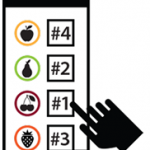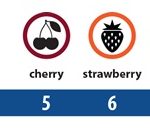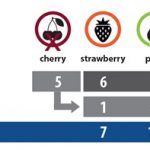The Ontario government recently announced municipalities will have the option of using a ranked ballot for future municipal elections as part of the changes proposed to the Municipal Elections Act. If passed, Kingston would have the authority to use ranked ballot voting as early as the 2018 municipal election.
Changing how our voting system works is an important decision. We need to understand the pros and cons of moving to a ranked ballot, and most importantly, have discussion and debate across the community. So, to kick start that debate, I’ve included a poll to gather your initial thoughts on this potential change.
The poll is below, but first a quick overview of what this change means…
Right now we use the ‘first past the post’ system, which allows you to vote for one candidate on the ballot and the candidate with the most votes wins.
A ranked ballot system allows you to rank the candidates, from your most preferred to least preferred. To win, a candidate needs 50% +1 of the votes. If no candidate gets 50% +1 of votes, after the first count of the ballots, then the candidate with the least number of votes is eliminated and their votes are redistributed based on the second choice selected on those ballots. This process continues until one candidate wins by 50% +1 of the votes.
Here is what the ranked ballot process can look like (images provided by the Ontario Government, for more information visit www.mah.gov.on.ca/Page11118)
In this example apple would win in a ‘first past the post’ system with less than 50% of the votes and pear would win with 50% +1 in a ranked ballot system.
So what do you think?
[polldaddy poll=9385747]Please note: this poll will close on Thursday April 21 and restrictions have been put in place to prevent repeat voting.





3 Responses
In the ranked system, what if you only vote for one and no others??? Does it become a “spoiled” ballot????
It appears that the Mayor has not fully presented all the choices available to the citizens under the draft legislation on electoral reform. Ranked ballots are fine for the mayoral position. And since the mayor received less than 40% of the popular vote, it is commendable that he is considering ranked ballots for this position.
Election of the city council is a different matter. City council should be representative of, and accountable to the community. This s best delivered by a proportional voting system. The newly proposed municipal election laws provide for that. In addition to ranked ballots, a proportional voting system requires multi-member wards. Such as system is called STV. A diagram explains STV on the OMAH website but it is not included above.
How STV works can be seen here: http://www.mah.gov.on.ca/Page11121.aspx
This video describes the implications: https://youtu.be/l8XOZJkozfI
In the 2014 Kingston municipal election, 45% of the votes for city council elected NO-ONE. This needs to be addressed to ensure citizens representative and accountable government. Multi-member wards are needed in addition to ranked ballots to ensure that all votes count.
Another consideration is that it is city-wide decisions that affect citizens most. Yet only the mayor is accountable to the entire city for decisions made by city councilors. This means that councilors may not be held accountable for city-wide decisions. This may pit one ward against the other. Eliminating the ward system or reducing the # wards to allow multi-member wards would provide for more cohesive city-wide planning.
When votes don’t count, citizens stop voting. In the last election, on a city-wide basis, each councilor received the support of about 3% of the total eligible voters. A proportional STV voting system would encourage more voters to cast their ballots.
I didn’t know about the poll in time to vote. I’m strongly opposed. Our system is not broken – don;t fix it.